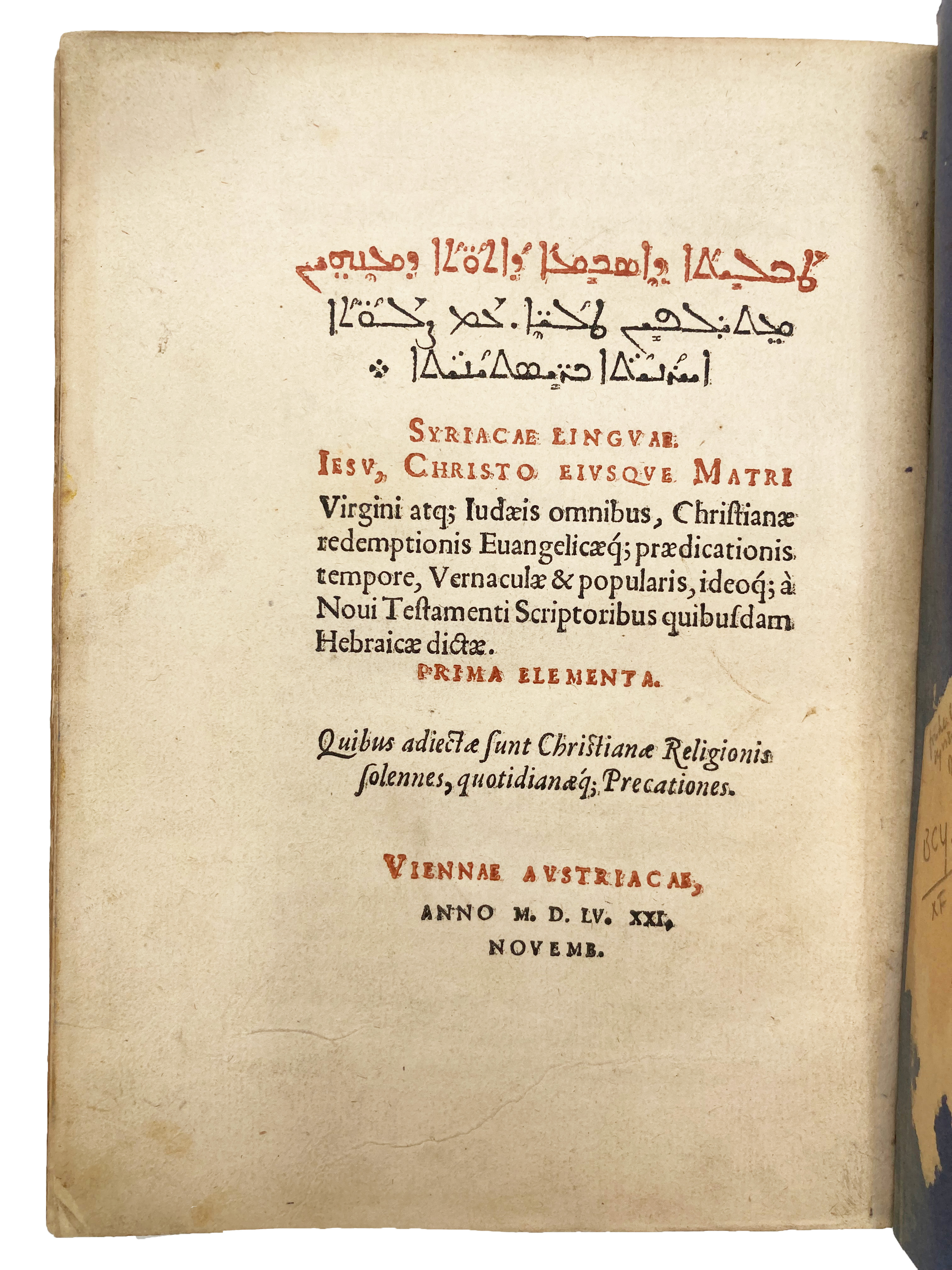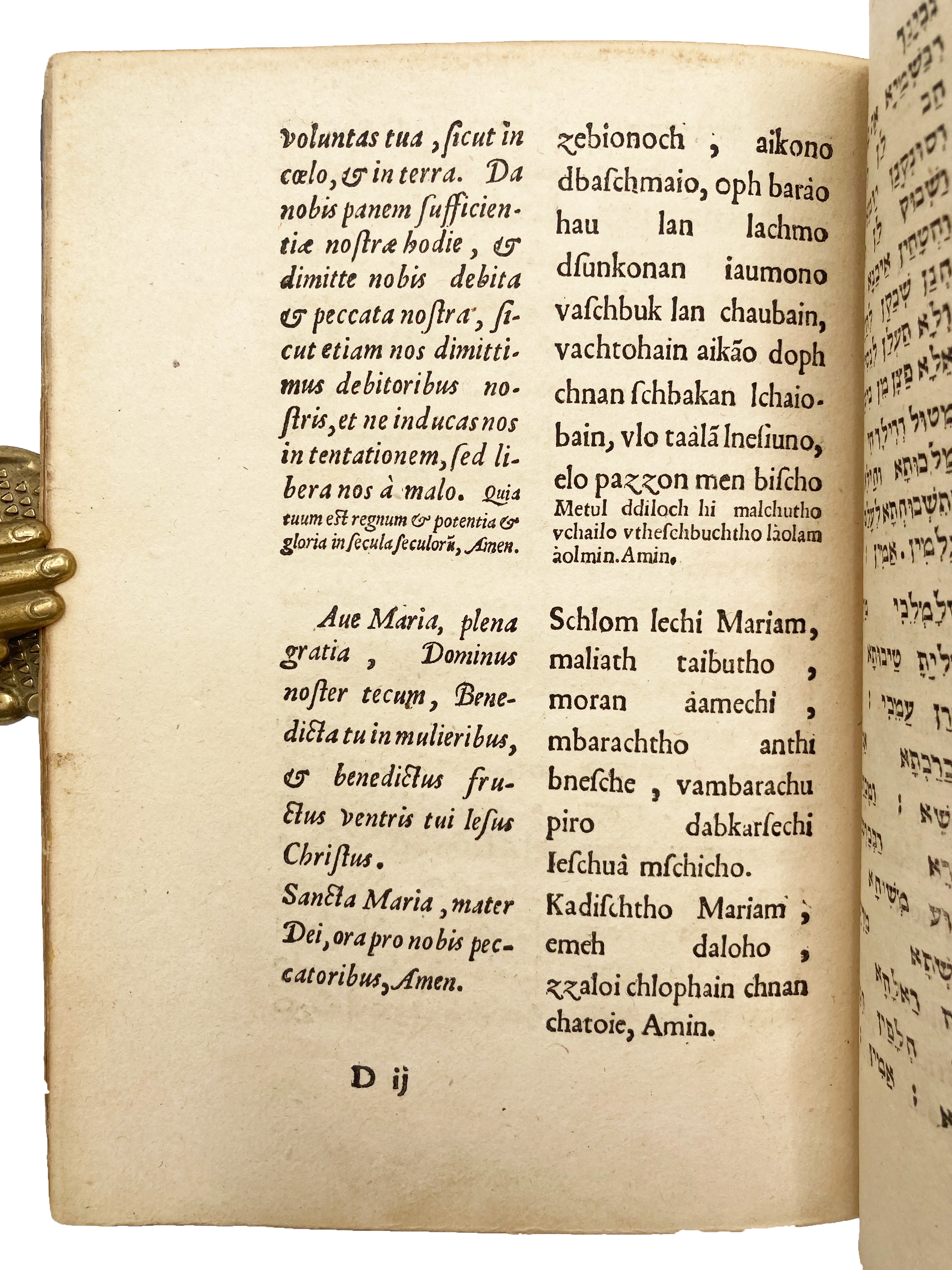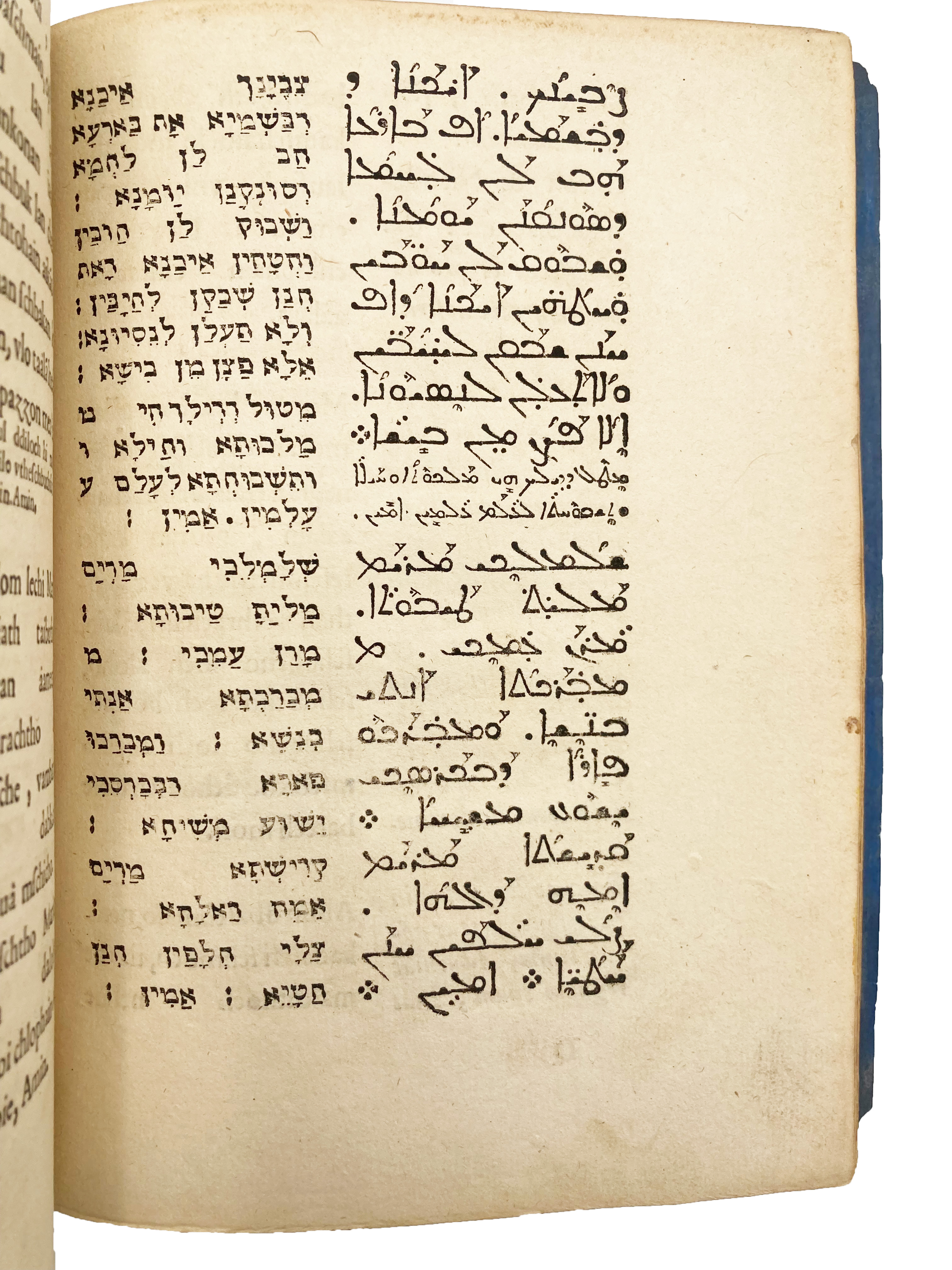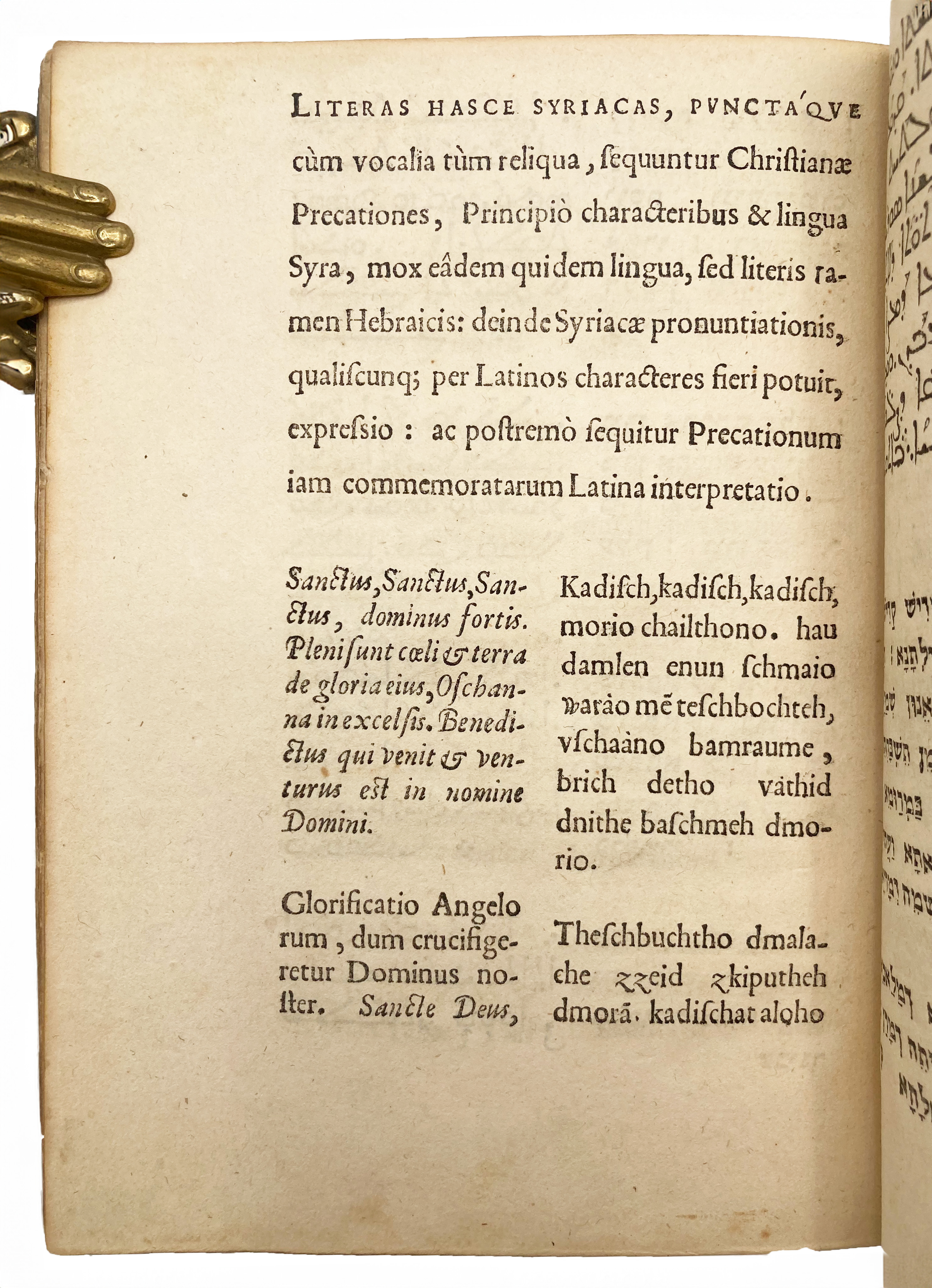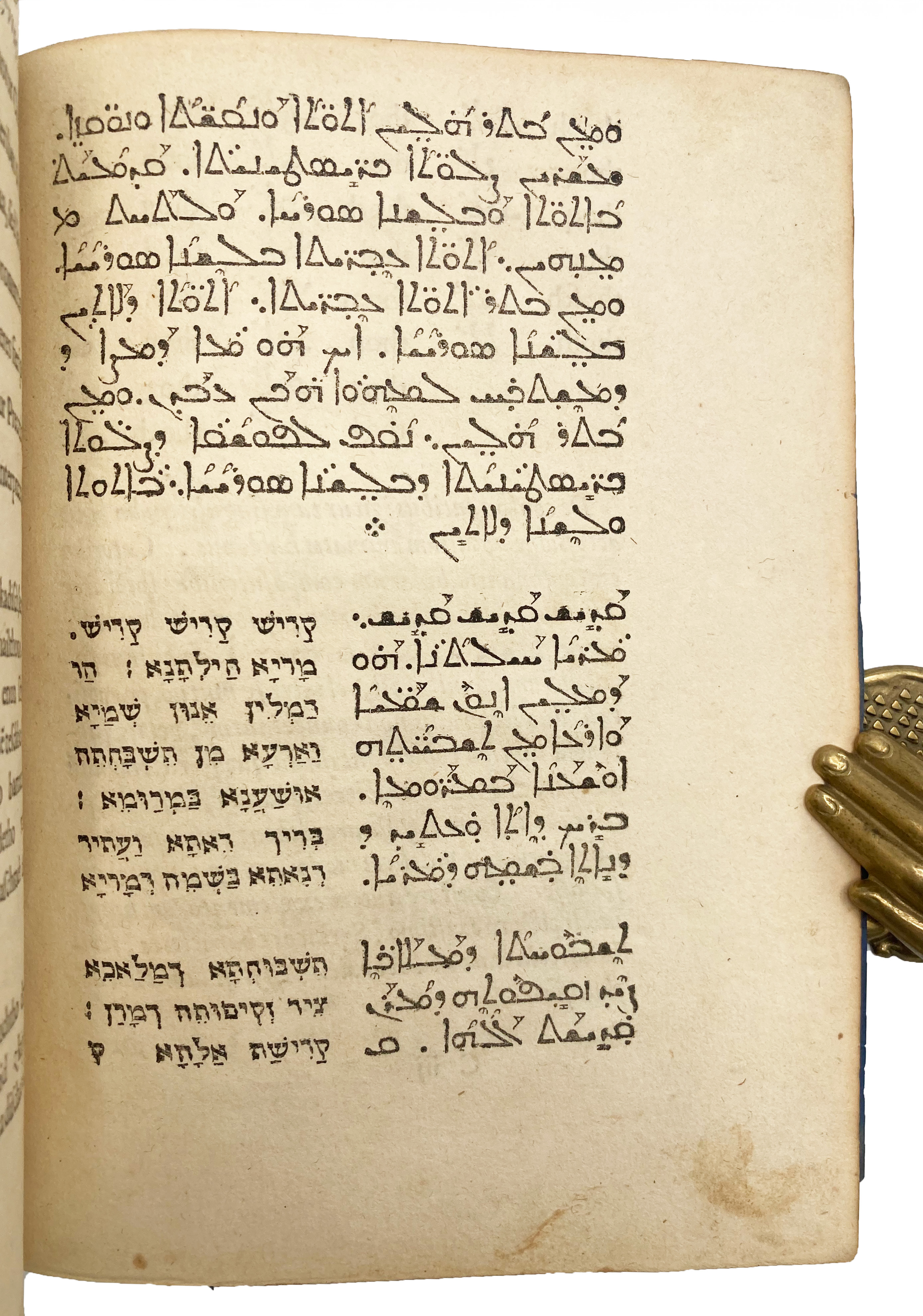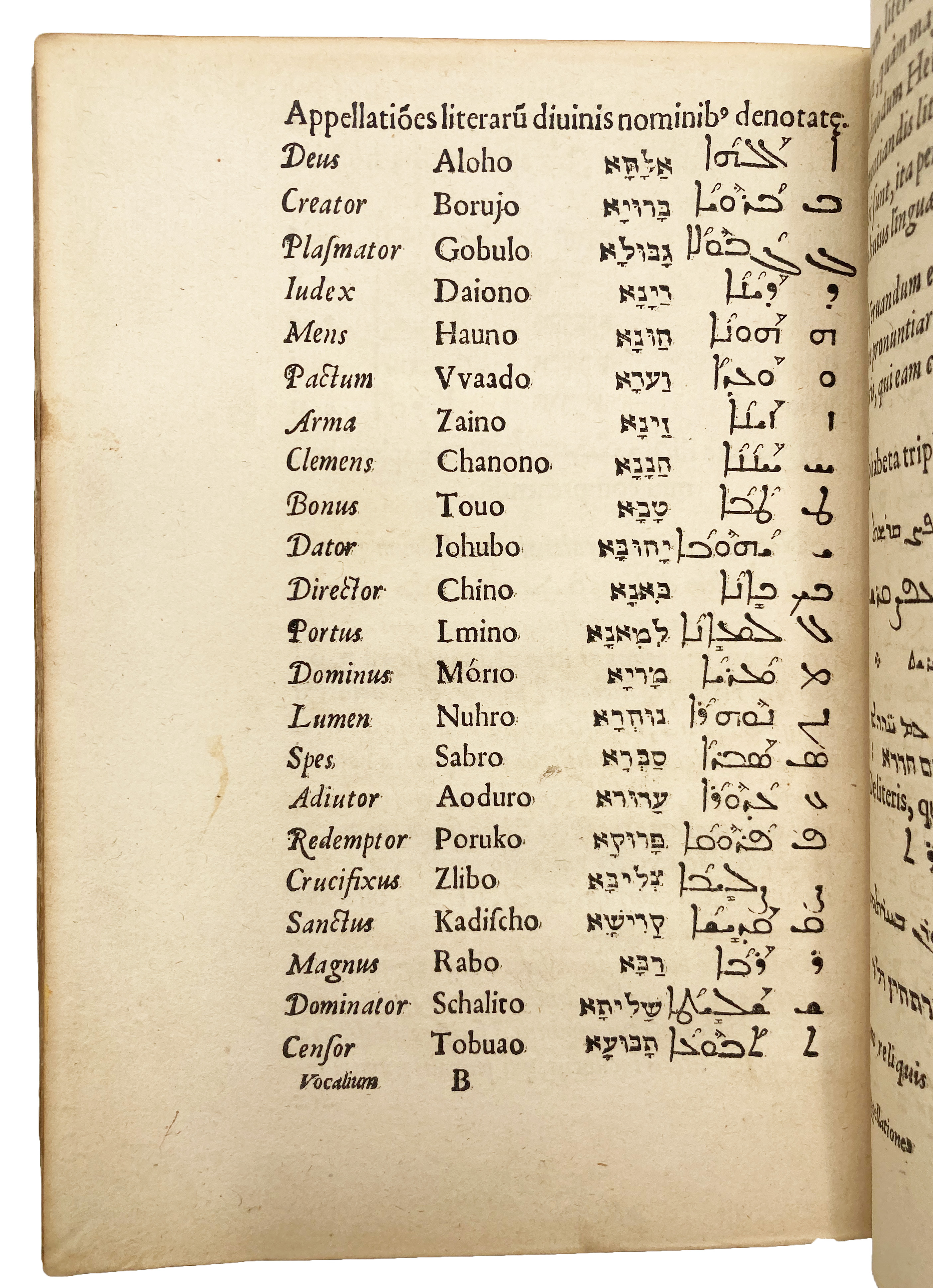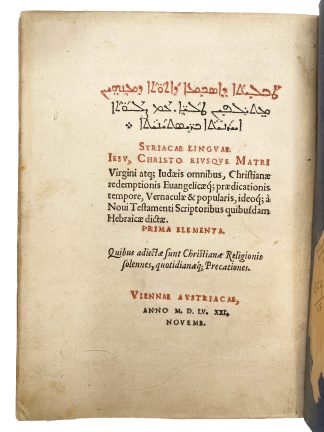WIDMANSTADT, Johann Albrecht.
FIRST SYRIAC GRAMMAR
[Syriac title]: Syriacae linguae … Prima elementa.
Vienna, [In Officina Michaëlis Cymbermanni], 21 November 1555 [colophon: February 1556]£2,250.00
FIRST EDITION. 4to. ll. 28. Italic and Roman letter, with Hebrew and Syriac. T-p in red and black, large woodcut of Widmanstadt arms to recto of final leaf, motto in Latin, Hebrew and Syriac. Somewhat later ms. ex libris of ‘M. Jodoci Hoffii Aschaffenb[urgensis]: Pastoris in [illegible]’ (i.e. Jost Hoff), with record of his donation of the book to the Jesuit College in a separate hand, date abraded. In C19th blue paper wrappers. Final leaf holed in blank, light ink soiling probably from the removal of old oval stamp. Some slight marginal smudges, one or two light spots and stains, a very good, wide margined copy.
First edition of the first printed grammar of the Syriac language, printed uniformly with, and at the same press as, the first work printed in the Syriac language using moveable type, the Syriac New Testament of 1555. The New Testament, in the Peshitta version, was prepared by Widmanstadt (or Widmanstetter) (1506-57) and his assistant Moses Mardin (dates unknown), a Syriac Orthodox priest who had travelled and taught widely in Europe. Mardin had initially collaborated with the French orientalist Guillaume Postel (1510-81) on the idea of a Syriac New Testament as early as 1537, and Postel was involved, collaborating on the types – based on Mardin’s handwriting – with the type founder Kaspar Kraft, who is credited in the colophon. ‘This editio princeps of the Peshitta NT, which … is still the best edition, was due mainly to Widmanstadt’s persevering energy, and remains his abiding monument’ (Darlowe and Moule IV, p. 1529). The project was financed by the soon-to-be Holy Roman Emperor, Ferdinand I. ‘The edition consisted of 1000 copies, of which 500 were retained for use in Europe, while 300 were intended for the Patriarch of Antioch and the Maronite Patriarch, and 200 were entrusted to Moses to carry back with him to Mesopotamia. Moses, however, after offering his stock of copies to Andreas Masius (Maes), a Flemish scholar, who had learnt Syriac from him when they were sojouners in Rome, eventually sold the books elsewhere’ (op. cit. Darlow and Moule).
The primer is dedicated to two of Widmanstadt’s young scholarly relatives, the preface describing the rough nature of the Syriac tongue but also its usefulness for piety – this being the language that Christ and the Virgin Mary spoke at home – and alluding to the presence of Mardin, who was on hand to fully explain its pronunciation. The primer details the Syrian alphabet and ligatures, gives major names, with Roman transliteration, and provides the same for increasingly longer syllables and words. There are then a series of prayers and extracts from the liturgy, including the Lord’s Prayer and Magnificat, printed in four columns: Latin, Latin transliteration of Syriac, Hebrew and Syriac. The primer is ‘sometimes found appended to’ Widmanstadt’s edition of the NT (see note to Darlow & Moule IV, 8948).
BM STC Ger., p. 913; Adams II, W 138; VD16 W 2490; USTC 607924; Graesse, VII, 447; not in Brunet or Darlow & Moule.

